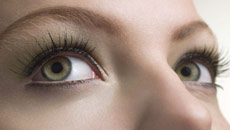If your kids are gaining weight because they spend more time indoor playing video games instead of playing outdoor, you may soon turn technology on its head - all thanks to a virtual pet designed to induce kids to physical activities.
The pet - an obese virtual dog - and an overall game platform has been developed by researchers from the University of Georgia in the US.
Children allowed to interact with the virtual pet averaged 1.09 hours of additional physical activity per day when compared to the group without the pet.
One of the goals for designing the pet was to make sure that it did not just have a "cool effect", said Sun Joo (Grace) Ahn, an assistant professor of advertising at Grady College, University of Georgia in the US.
"We really wanted them to integrate the virtual pet into their individual lives, their social lives and then bring it in as a part of their environment that enables them and encourages them to engage in physical activity," she added.
The study involved 61 kids of ages 9-12. Participants set goals for the amount of physical activity they wanted to complete throughout the day over a course of three days.
They were made to wear an activity monitor that would keep track of their activity.
Children were split into two groups but only one group was allowed to train, exercise and play with an obese, virtual dog.
The children assigned to interact with the virtual pet were told that their physical activity would be used to improve the health of their individual dog, which they got to name and choose the colour of its collar.
The interaction with the pet as well as the goal setting and checking was done using a kiosk.
For the group with the virtual pet, if their goal had been met, their dog would give them a congratulatory message and allow them to use controls to cause the dog to perform a trick.
If goals were not met, the dog would encourage them to participate in more physical activity to meet their goals.
“I really believe that emerging technology is able to help people make better decisions and make behavioral changes for the better,” Ahn said.
The study appeared in the journal IEEE Transactions on Visualization and Computer Graphics.





